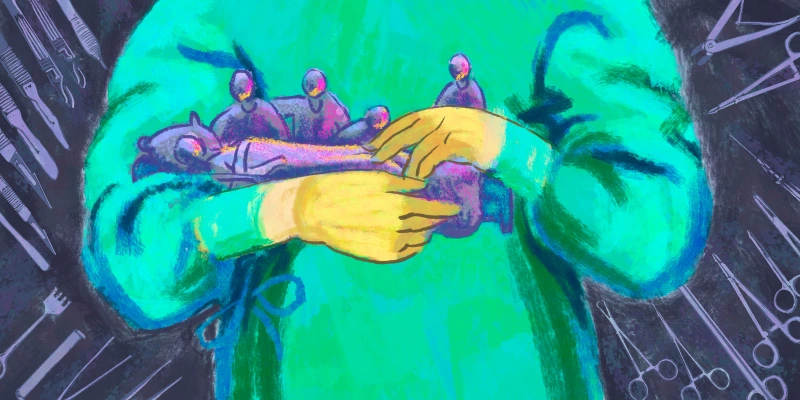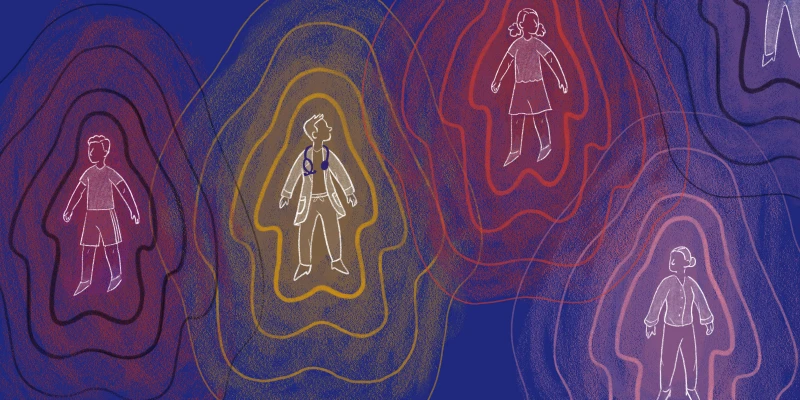I’ve spent my career working in some of the less conventional corners of medicine — correctional health, methadone clinics, virtual practices. These are settings where resources are often limited, and prevention can sometimes become the highest form of care.
In places like these, you learn to be thorough, but you also learn to be careful about what that thoroughness costs.
Because while being thorough is essential, we rarely ask what happens when it becomes automatic.
The Double-Edged Sword of Good Intentions
Overdiagnosis isn’t a failure of skill or knowledge. It’s what happens when well-meaning clinicians (who are often under the pressure of protocols and performance metrics) start labeling risks as diseases and deviations as disorders.
In preventive medicine, we screen, we monitor, we catch things early. But the line between “early” and “unnecessary” is thinner than we admit. I’ve seen patients burdened by pre-disease labels (e.g., pre-hypertension, pre-diabetes) years before any symptoms. I’ve seen incidentalomas spark cascades of testing, anxiety, and procedures, with no impact on health.
These diagnoses often feel virtuous. They reflect diligence, care, and attention. But sometimes they’re more about the system than the patient.
The Systemic Pull Toward “More”
Early in my career, I thought overdiagnosis was mainly a clinical issue. That it was something driven by uncertainty, caution, or habit.
But in my nonclinical work, particularly in utilization review and documentation consulting, I’ve seen how systemic incentives drive it too. Quality metrics reward thorough documentation. EHR prompts push us toward more coding. Clinical workflows prioritize capturing every possible condition, often without clear regard for its relevance or impact.
The pressure to do more is built into the structure. But in practice, that often means less clarity, not more.
Diagnosis, Burnout, and the Mental Load
Physicians talk a lot about burnout. Less often, we talk about where that burnout comes from. I believe part of it lies in our cognitive overload. By this, I mean the invisible weight of managing not just our patients’ symptoms, but their expanding lists of chronic conditions, flagged labs, and clinical alerts.
Many of those diagnoses are warranted. But others? They’re artifacts of a system that struggles to pause.
For physicians working in unconventional environments like mine, that pause is a survival skill. When resources are limited, you learn to focus. You learn to ask not just can I diagnose this, but should I?
Thoughtful Medicine Isn’t Less Medicine
This isn’t an argument for ignoring disease. This is a call for clinical judgment. The solution isn’t to be less careful, but to be more intentional
Being thorough doesn’t mean labeling everything. Sometimes, it means knowing what not to label. It means talking with patients about uncertainty. It means trusting that not every deviation from baseline needs a name.
I recently reflected on these ideas after listening to a conversation featured on Curie. Curie, for those who are not familiar, is a podcast platform I’ve come to appreciate for the way it highlights the subtler challenges of clinical practice. It features conversations that may not make it to grand rounds or journals but still shape how we show up for our work.
What Are We Really Diagnosing?
At the end of the day, every diagnosis carries weight. It affects how a patient sees themselves. It shapes what they expect. It alters what they believe they need.
So, here’s a quiet challenge: Think about the last few diagnoses you made this week. Which ones helped your patient? Which ones were made out of habit? Which ones might have added more burden than clarity?
And then ask yourself: What does it really mean for me to practice “good medicine”?
Answer Dr. Stacy’s question in the comments!
Sylvie Stacy, MD, MPH is a preventive medicine and addiction medicine specialist. She is the author of “50 Nonclinical Careers for Physicians” and “50 Unconventional Clinical Careers for Physicians.”
Illustration by Diana Connolly







